Weeds and pollinating insects
Numbers corresponds with numbers on the board
1.
Few people know that one of the most endangered groups of organisms today are species associated with agricultural lands, especially arable lands. Liquidation of balks, wastelands, fallow land and backfilling ponds, cutting down trees, and above all, more effective plant protection measures, have led to a situation in which there is no place in the agricultural landscape for species other than cultivated potatoes, rye or corn. Hares and partridges have disappeared from the fields – they have nowhere to hide, they have nothing to eat, they die due to spraying with herbicides and insecticides. Even less often, we notice that cornflowers, poppies and common corn-cockle, wild bees and beetles are also disappearing forever.
Set up a weed garden
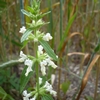 |  |  |  | 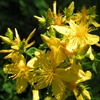 |  |
| Annual hedge-nettle Stachys annua | Corn Marigold Glebionis segetum | Viper’s bugloss Echium vulgare | Tuberous pea Lathyrus tuberosus | St John’s wort Hypericum perforatum | Crow soap Saponaria officinalis |
 | 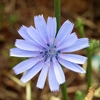 | 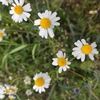 |  | 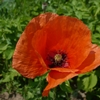 |  |
| Forking larkspur Consolida regalis | Common chicory Cichorium intybus | Corn chamomile Anthemis arvensis | Common corn-cockle Agrostemma githago | Common poppy Papaver rhoeas | Cornflower Centaurea cyanus |
2.
Did you know that a large part of plants considered unnecessary weeds were once the first edible plants, e.g. gout or chicory? Many of them also have healing properties still used today, e.g. viper’s bugloss or St. John’s wort. Currently, the constant drive to increase the productivity of fields and the economic efficiency of crops has contributed to the decrease in number of weed species in Europe and many of them have become regionally extinct. All this made the images shown on the right side of the page a rare sight. You can help protect these species by establishing your own weed garden or a mini flower meadow – various seed mixtures are available on the market. A well-composed mixture will make the garden colourful from early spring until fall.
Build an insect house
A
The whole thing must be secured with an appropriate mesh to prevent birds from feeding
B
We can use old shelves, cabinets, boards or wood from pallets for construction
C
Twigs, pine cones and dry leaves give shelter, for example, for ladybugs
D
Wooden blocks or thick branches with drilled holes provide shelter for solitary wasps and bees.
E
Thick dry canes of reed or bamboo are empty inside – it is a perfect shelter for e.g. red mason bees
F
Twigs, shrub stalks, i.e. blackberries, roses or elderberry, are a refuge for Hymenoptera, i.e. wasps, bees, but also ants
3.
The species diversity and biomass of insects in agrarian ecosystems has decreased several times over the last 30 years, the list of endangered species currently includes several dozen species of domestic weeds, together with insects pollinating them, as well as crops. In Europe alone, about 4,000 species of arable crops will not produce crops unless they are pollinated by insects.













